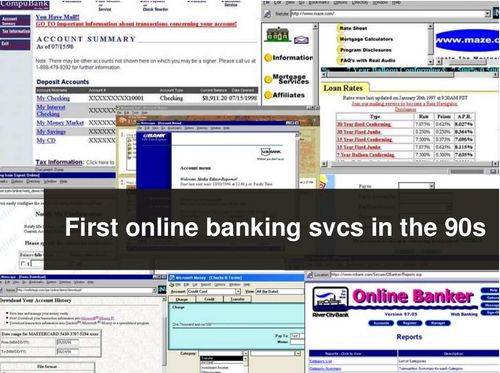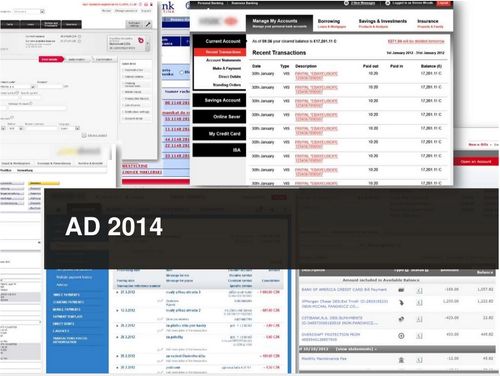
I spent some time with a digital bank this week (yes, they do exist!), and one of their slides really caught my attention.
The slide was showing what online banking looked like in the 1990s …

… and the point being made was that most banks are still stuck in the 1990s.
They may have added PFM and apps, but the core engine behind such banks is still a table-driven system based on a 1970s engine.

I sat and watched and thought: HELL YEA!
My bank is just like that.
It presents debits and credits on my online access, and that’s it.
Nothing more or less.
No contextual information about where those debits and credits orginated.
In fact, quite often, I’ve no idea who paid me what or where I spent what.
And this is the 21st century?
Wake up, shake up and move up.
You can’t survive much longer as a table-based bank when the world is moving so fast to a contextual based network.
The context-based network recognises who I am, where I am and what I’m doing.
The reason Google, Amazon, Facebook and company are so revered is that they track and trace our digital footprints.
Whilst banks rely on 1970s processing to deliver 1990s internet banking in tables through 2010s front-ends, they are leaving one helluva gap for disruptors to innovate.
Chris M Skinner
Chris Skinner is best known as an independent commentator on the financial markets through his blog, TheFinanser.com, as author of the bestselling book Digital Bank, and Chair of the European networking forum the Financial Services Club. He has been voted one of the most influential people in banking by The Financial Brand (as well as one of the best blogs), a FinTech Titan (Next Bank), one of the Fintech Leaders you need to follow (City AM, Deluxe and Jax Finance), as well as one of the Top 40 most influential people in financial technology by the Wall Street Journal's Financial News. To learn more click here...

